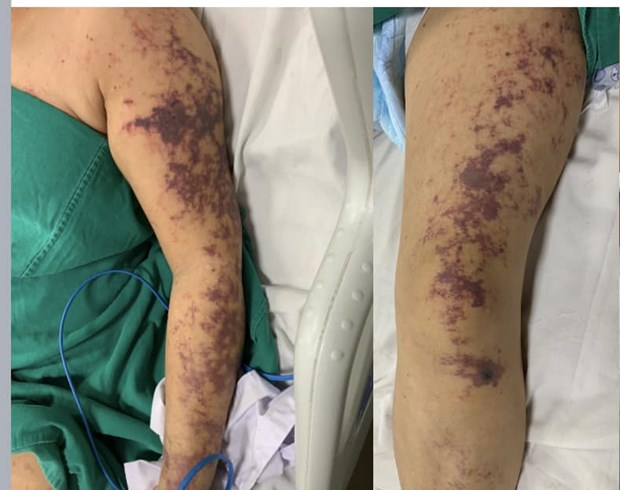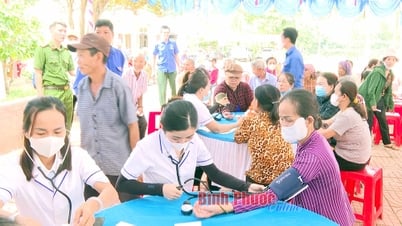
On August 3, according to information from the Central Hospital for Tropical Diseases, the hospital's doctors had just received a 59-year-old female patient from Hanoi who was transferred to the Intensive Care Unit in critical condition. The patient was having difficulty breathing and had to be switched to high-flow oxygen therapy (HFNC).
Through investigation, doctors learned that 4 days ago, the patient had eaten pig intestines (not blood pudding) with his family. No one around him had similar symptoms. One day after eating pig intestines, the patient developed a high fever, continuous chills, loose stools 5 times a day, vomiting food, dull headache, and body aches.
On the second day, the patient had purple-black patches on his face and was taken to the medical facility by his family in a lethargic state, with low blood pressure, purple skin lesions all over the body, severe metabolic acidosis, continuous blood filtration, blood and cerebrospinal fluid cultures showed S.suis (streptococcus suis).
The patient was diagnosed with septic shock, sepsis with meningitis caused by S.suis - Respiratory failure, slow improvement.
The patient was transferred to the Intensive Care Unit (Central Hospital for Tropical Diseases) on August 2. The patient's condition has improved.
According to hospital doctors, the bacteria that cause swine streptococcus are completely destroyed when food is thoroughly cooked. To prevent swine streptococcus, people should not eat raw blood pudding and uncooked pork products. People should not buy, sell, transport, or slaughter sick or dead pigs or unsanitary pork products; Do not use pork that is unusually red, hemorrhagic, or swollen.
To prevent swine streptococcus, people need to practice good personal hygiene when coming into contact with pigs or processing pork. When symptoms of the disease appear, they need to go to a medical facility immediately for examination and timely treatment...
Source link


![[Photo] Party and State leaders visit former President Tran Duc Luong](https://vphoto.vietnam.vn/thumb/1200x675/vietnam/resource/IMAGE/2025/5/24/960db9b19102400e8df68d5a6caadcf6)
































![[Photo] Anh Hoang - Dinh Duc successfully defended the men's doubles championship of the National Table Tennis Championship of Nhan Dan Newspaper](https://vphoto.vietnam.vn/thumb/1200x675/vietnam/resource/IMAGE/2025/5/23/d6ab3bcac02c49928b38c729d795cac6)


































































Comment (0)